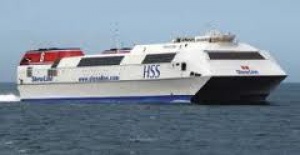Traffic up at Stena Line

Stena Line has reported its most successful first half-year North Sea traffic results for four years.
Between January and June 2011 the ferry operator’s two new Superferries carried 6.4 per cent more cars and 1.4 per cent more passengers from Harwich to the Hook of Holland than during the same period the previous year.
The North Sea growth, which represents an additional 3,000 cars, was Stena Line’s strongest since the company modified its frequencies on the route in 2007, topping the upsurge in passengers generated by the Eyjafjallajökull volcano ash plume in the first half of 2010.
The growth was accompanied by significant increases in North Sea coach traffic.
In spite of the ongoing recession Stena Line achieve 17.9 per cent growth in coach traffic for the first six months and 23.4 per cent for the second quarter.
Growth for the month of June was particularly robust, with an 11.4 per cent year-on-year rise in passengers, an 11.8 per cent upsurge in cars and a 29.5 per cent growth in coaches.
Stena Line has also been nominated as Europe’s Leading Long Sea Ferry Operator by the prestigious World Travel Awards.
Lars Olsson, Stena Line’s general manager for travel on the North Sea, said: “These are exciting results for us and we’re particularly pleased in view of the additional capacity created by the two Superferries we launched last year.
“To have grown numbers of cars, passengers and coaches to Holland steadily throughout the first six months is rewarding and shows Stena Line to be on course to achieve our targets for this year.
“We also carried 2,000 additional passengers in the second quarter alone, which we would attribute to the convenience of our service, our value pricing and to the high numbers of travellers who are discovering the levels of comfort and onboard facilities that our new Superferries can offer.
“We believe the extra 90 coaches we’ve transported for the first half-year to have been fuelled in part by overseas travellers taking their return flights from mainland Europe to avoid the high levels of Air Passenger Duty out of the UK.”

